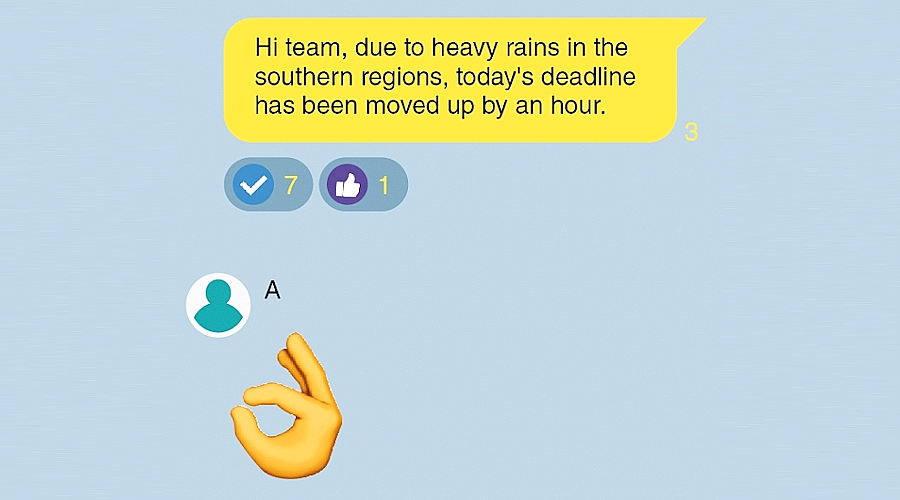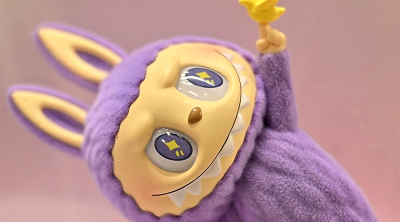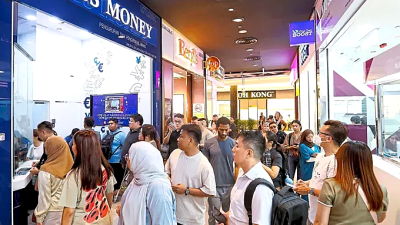
In today’s digital landscape, emojis contribute a great deal to communication, but how well do they translate to the corporate world?
For some, these symbols are efficient tools for communicating in the workplace, while for others, they seem unprofessional.
Over 60 per cent of workers in South Korea use emojis at work, according to a recent survey conducted by tutoring platform Preply.
While about 90 per cent of those emoji users exchanged them with peers at work, use with senior colleagues was far less common, with only 30.6 per cent of senior managers and 24 per cent of CEOs receiving emojis.
A user on Blind, an anonymous online platform for verified employees, asked if emojis were suitable for communicating with senior colleagues. One commenter responded, “Don’t do it, especially heart emojis.”
Visual aids
Among emoji users surveyed, most found the visual cues of emojis conducive to conveying emotions, thereby enriching text-based communication.
In workplace scenarios where plain text could be misinterpreted, visual representation through emojis helps minimise misunderstandings and avoid potential conflicts.
As Instagram user itstaehyunie commented in response to The Korea Herald’s survey on this topic on Instagram Stories, emojis help to express “emotion and tone” in “otherwise monotone text.”
Emojis are commonly used as a social lubricant, with 33 per cent of surveyed emoji users employing them to approach colleagues in a friendly manner and 26 per cent using them to foster closer relationships.
Choi Chang-hyun, a Seoul-based office worker in his late 20s, believes that using cute icons in communication helps create a more approachable and collaborative atmosphere.
“Emojis, when used appropriately, help form a positive working environment, as good workplace relationships lead to better communication and cooperation,” he said.
Instagram user nadiarausa opined, “Emojis help me understand the other party(s) involved and communicate better.”
One area where the use of emojis is becoming commonplace is in responses, often in a group chatroom.
Replying with an emoji or adding a reaction to a message are convenient ways to acknowledge messages, eliminating the need for a full reply.
However, responding via emoji seems to carry the risk of the sender being seen as insincere or rude, especially when the original message is from an older person who prefers receiving a proper, worded response from their subordinates.
Instagram user borislianto pointed out that whether we like it or not, emojis will be part of workplace communication in the future: “When the Gen Z is on the rise, emoji usage will be huge in coming days.”
‘Too casual’
Those who disapprove of emoji use say it is inappropriate for formal communication.
For some, text alone suffices to convey meaning without the need for pictorial icons.
“It’s hard to understand the mindset behind using emojis. They seem immature and lack professionalism,” one Blind user commented.
Park Ji-hyun, a Seoul-based office worker in his early 30s, shared this sentiment, believing the safest bet is to avoid using them altogether.
“Emojis, though an effective communication tool, can go either way in business settings,” Park remarked.
“They could elicit a positive or negative response depending on the context and the recipient.”
This issue of formality becomes more pronounced when communicating with senior colleagues, Park added.
Instagram user jacodex also cautioned against using “playful” emojis, noting that they can come across as too casual and not serious enough for professional contexts.
In some instances, users on Blind reported that emojis can lead to confusion or misinterpretations of messages. Therefore, with the vast array of emojis available, it is essential to choose what is appropriate.
Kim Jae-hoon, 33, advised a minimalist approach, “Stick to basic emojis.”
He suggested avoiding overly casual or humorous illustrations, instead opting for simple default emojis.
For those less familiar with digital icons, such as Lee in her mid-50s, text-based emoticons can be a good alternative.
She mentioned using two carets (^^) to express friendliness — two characters that commonly represent smiling eyes in South Korea.
“It seems inappropriate to use anything beyond simple character combinations from the keyboard,” Lee said.
As user amelialikeum said, emojis should serve to “enhance the message,” not as the sole means of conveying meaning. That is, it hinges on one’s ability to comprehend thoroughly the context to determine when to employ emojis and which to employ.
“If you cannot achieve that,” Kim advised, “It is preferable to refrain from using them.”
ADVERTISEMENT
ADVERTISEMENT








































